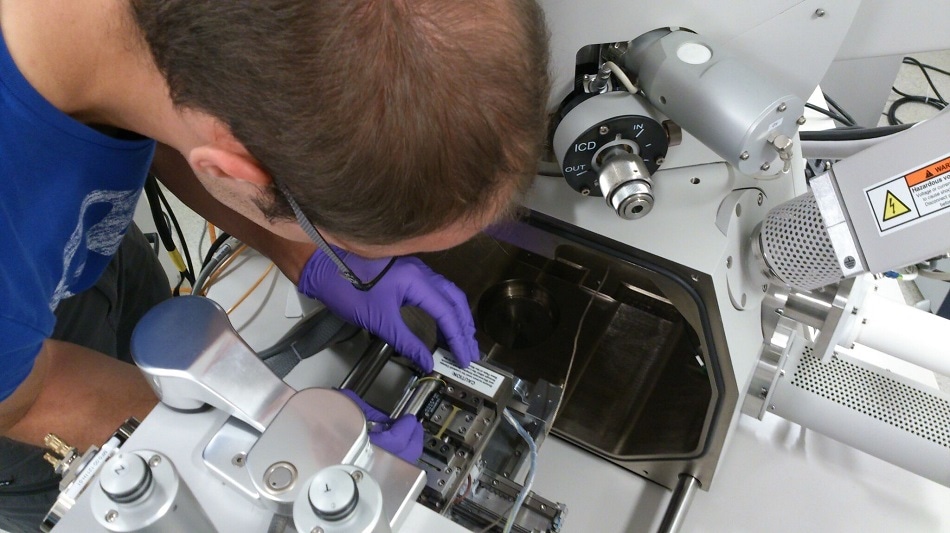
Image Credits: Deben
The School of Materials at the University of Manchester is the largest school of its kind in Europe. It has arguably one of the highest research levels of any university for materials activity in the UK, with 80% of their research rated as being internationally excellent or world leading in quality. At Manchester, great emphasis is put on on-going collaborations with industrial partners from across the aerospace, automotive and nuclear sectors.
One group at Manchester is particularly concerned with understanding how the deformation behaviour of materials at the micro- and nano- scale corresponds to that of bulk material. It is known that the strength of any particular alloy is often determined by deformation behaviour within, and between, grains (in the range of 10's - 100's µm) and around fine precipitates (10's - 100's nm). At Manchester, they have pushed the resolution of DIC (Digital Image Correlation – an established technique that maps the strain across the surface of a sample by tracking the relative movement of surface features) by developing techniques to ‘remodel’ gold on the surface of samples into tiny spheres only 10's of nanometres across. By imaging how these spheres move relative to each other during deformation, it is possible to determine how strain is localising at sub-micron resolution; this is beyond just resolving the global strain distribution within the grains, and is able to resolve specific crystallographic planes that the deformation is occurring on. By combining with other techniques such as Electron Back Scatter Diffraction (EBSD) for crystallographic orientation information, the group have been able to build up a far fuller picture of the nature of the deformation.
The only way to track such small particles is to resolve them, necessitating the use of a Scanning Electron Microscope (SEM). Even using a reasonably high-end SEM, resolving such small particles is pushing the system. The best resolution imaging is achieved when working at short working distances (sample as close to the final electron optic as possible), but this leaves little room for an in situ deformation rig.
Until recently, the in-situ deformation rigs we had available to us were quite large, meaning that the optimal working distances could not be reached and resolving the fine gold particles was nigh on impossible. Therefore we were forced to apply the deformation ex-situ and then remove the sample from the rig in order to image it. Not only does this mean that potentially vital information is lost as the sample is allowed to relax but some experiments may require several loading steps, with the sample removed and replaced between each step, risking damage to both the sample and the gold pattern upon it. The issue of working distance with the Deben stage is of less concern due to the loading screws being mounted under the sample. This means there is little above the maximum height of the sample to prevent optimal positioning in the microscope. We are able to work at shorter working distances and achieve superior resolution. As a result of this we are, for the first time, able to carry out high resolution DIC maps at load and during many deformation steps.
Jack Donoghue, Experimental Officer, University of Manchester
Michael Atkinson, a PhD student working with Jack, explains how this benefits his research. “Being able to image at load is of key importance for studying the influence of reversed loading on plastic deformation, with the Bauschinger effect often leading to early reverse plastic deformation while unloading. Reversed loading is a key test for microstructure informed modelling techniques (e. g. CPFEM), and having a clear picture of how local deformation redistributes during unload and reversed loading aids in the development of such models. With sufficient validation it is hoped that microstructure based modelling can reduce the dependence of material testing of different microstructures, replacing them with fundamental tests used to calibrate a model and then simulating the response of a different grain size, morphology or texture.”
Preliminary work showcasing this technique was recently presented in January 2017 by Michael Atkinson at the International Conference on Plasticity, Damage and Fracture in Puerto Vallarta, Mexico.